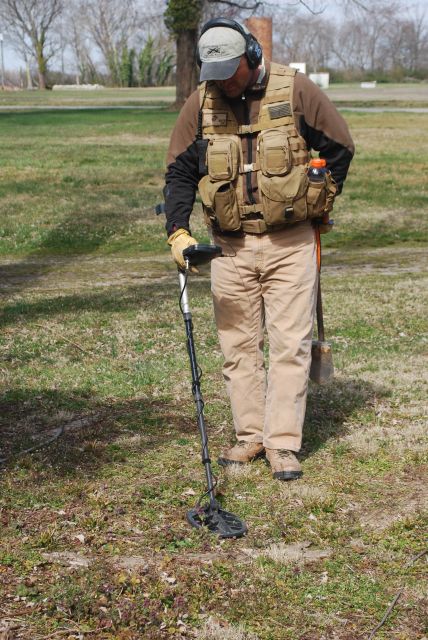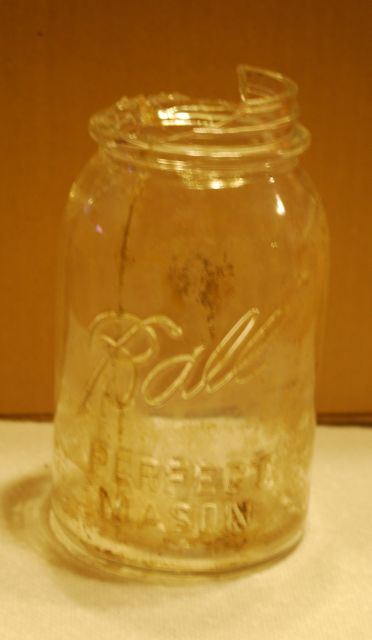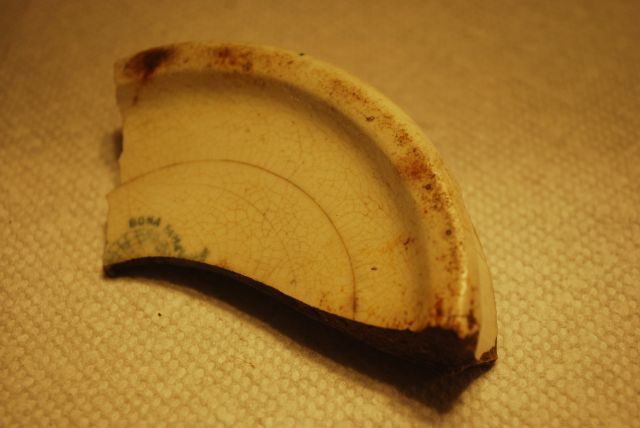Artifacts Results are in!
On Tuesday, after my appointments, I went to Ferry Farms, boyhood home of George Washington to see our favorite archaeologist, Mara. She has been helping us for about one year identify and date our artifacts as we find them. About two weekends ago, we allowed a one time metal detecting hunt of the plantation. We were able to undercover some really nice pieces this time. Here are the items and the results she was able to tell us about!
One of the finds we discovered close to what would have been the barn site turned out to be a trash pit. Back before trash pick up, people would burn most of their trash. If it didn’t burn, it would go into a pit and would be buried. These are treasure finds as the items can be place to a time period by looking at all the items as a whole.
From the dates of the items we recovered from this trash pit, we can say that the period would fall during the last residence, John Palmer and Mary Hooker (1930-1987). We mostly found glass bottles and pieces of plates.
Mara’s Results:
Clear Liquor Bottle: Aluminum Screw Cap, Machine Made, Volume Designation (Quart), Embossed on Body: “Federal Law Forbids Sale or Re-Use of This Bottle”, Owens of Illinois Mark and Suction Scar, Embossed on base: D-1 / 60-6.
- Although Owens of Illinois started using this mark in 1929, the federal government did not start regulating the re-use of liquor bottles until 1935. This makes the date range for this bottle 1935-1959 based on the embossing on the body and Owens of Illinois mark.
Mara’s Results:
Ball Jar: Embossed: Perfect Mason, Valve Mark on Base, Threaded Rim, Machine Made.
- Wide mouth machine made canning jars without ground rims started to be manufactured in 1910. Valve marks (marks made from semi-automatic bottle machines, usually reserved for wide mouth bottles/jars) have an end date of 1940. The ‘Perfect Mason’ designation was utilized between 1910 and 1960. You can further identify the years by looking at this website: http://www.balljars.net/ball_jar_progression.htm Without having a picture of the jar, the most conservative estimate would put this jar between 1910 and 1940.
Mara’s Results:
Clear Condiment Bottle: Metal Screw Cap, ‘Ghost’ Seam, No Basal Markings.
- Not able to date this bottle but given that it is machine made, it has an early date of no later than 1920 on it.
Mara’s Results:
Brown Square Medicine Bottle With Remnant Applicator: Screw Finish, Iron Alloy Cap Present. Base Embossed with Owens of Illinois Mark and identifying Marks indicating plant where made, year and mold type, Suction Scarred Base.
- Basal Marks indicate this bottle was produced at the Alton, Illinois plant in 1937
Mara’s Results:
Glass Jar (Art Deco Motif): Embossed: “Mrs. Schlorers” on body. Base Embossed: “No 89403 Des PAT A 4 42”. Suction Scarred Base.
Jar was patented on March 7, 1933. Remember how I told you that some bottles contained condiments that we didn’t consume today? Well, that bottle was for Mrs. Schlorers Mayonnaise or ‘Olive-naise’. She made the first commercially sold mayonnaise in 1907 in Philadelphia. See: http://www.mrsschlorers.com/history.html
Early date on this bottle is obviously 1933
Mara’s Results:
Orange Lustre Elephant Figurine:
- Most likely manufactured in Japan between the 1920’s and 1930’s. Although I could not find an exact replica, there are other similar examples: http://www.etsy.com/listing/114867102/vintage-lusterware-elephant-figurines
Mara’s Results:
White Granite Hollowware Base With “Bona Fama…” Mark:
- This mark reads fully: “Bona Fama est Melior Zona Aurea” or “A good reputation is better than a golden belt.” It was utilized by the Edwin Bennett Pottery Co. of Baltimore, MD. From 1890 until 1936. I would put the end date of this piece at 1930 at the latest, however. So, 1890-1930 for the hollowware base (likely a pitcher).
Mara’s Results:
Milk Glass Fragment with Strawberry Molded Motif
- This one is pretty cool. It’s part of a strawberry ‘jam jar’ manufactured by Hazel Atlas from 1938-39 and would originally have been painted red and green like a strawberry, although the paint has worn off (this often happens with painted milk glass recovered archaeologically). A lot of people don’t know that many milk glass novelties and decorative tablewares were originally painted but, over time, that inexpensive enameling rubs off. These strawberry jam jars were given away free with other purchases, such as Corn Kix cereal to promote the product. Along with the strawberry jam jar, one shaped like an apple was also produced and given away by manufacturers looking to market their products. The original would have looked like this: http://www.etsy.com/listing/93492998/mid-century-hazel-atlas-glass-strawberry
To see all the artifacts
Visit our Facebook Fan Page
and view our Artifacts Album!




























